5 Facts to Help You Grow the Best Tomatoes Yet

As Lewis Grizzard said, “It’s difficult to think anything but pleasant thoughts while eating a homegrown tomato.” If you’re aiming to grow your own tomatoes this year, here are five facts about botany, pollinators, and pests you can put to use in your own garden to increase your harvest of homegrown tomatoes.
Now that the danger of frost has passed, we’re planting tomatoes. I’m already having pleasant thoughts of eating them fresh from the garden. Actually, eating them fresh IN the garden.
This post was originally published a couple years ago. At the time, my six-year-old son was helping me move tomatoes in and out of the house to harden them off. One evening he exclaimed, “Once the tomatoes and peppers have fruit, I won’t even have to come inside to eat!” 😂
I never mind if the kids ruin their dinner by filling up on veggies in the garden.
Here are five interesting facts to help you grow your best tomatoes ever:
1. Tomatoes can grow roots along their stem.
Like many vines, tomatoes can root anywhere their stem touches the soil. If you look closely at the base of your tomatoes, you may see warty bumps, officially known as root primordia, that are ready to grow into roots.
What You Can Do: Plant your tomatoes deep and they’ll grow a strong root system. You can bury most of the plant in a deep hole, leaving top two or three sets of leaves above soil level. Or you can plant the seedling sideways in a long trench, bending the top gently and leaving it above ground.
2. Greenhouse tomato growers bring in bumblebees to pollinate their crops.
Tomato flowers are self-fertile. The pollen from the male anthers can pollinate the female stigma, if gets transferred from one to the other. Pollen is only released when the flower moves. Wind or a gentle shake can release a little pollen. But a certain insects does even better.
Bumblebees use “buzz pollination” to get the tomato to release large amounts of pollen. A female bee wraps her legs around the flower, then vibrates her wing muscles and thorax. She shakes the pollen out of the flower’s anthers and gathers it to feed young bees. The tomato flower gets pollinated along the way. (You can hear the difference between flight and buzz pollination in this short video.)
What You Can Do: Encourage tomato-pollinating bumblebees in your own yard by providing lots of flowers, a source of clean water, and “wild” space near your garden. Bumblebees prefer to nest in old rodent burrows, so wood piles and brushy areas offer good habitat.
3. Careful watering can help prevent common tomato diseases, including blossom end rot and blight.
Tomatoes need consistent water–ideally, one inch of rain or irrigation per week. Drastic swings from wet to dry can make the plants susceptible to blossom end rot, a condition related to calcium levels. In drought, tomatoes may not be able to uptake enough calcium from the soil.
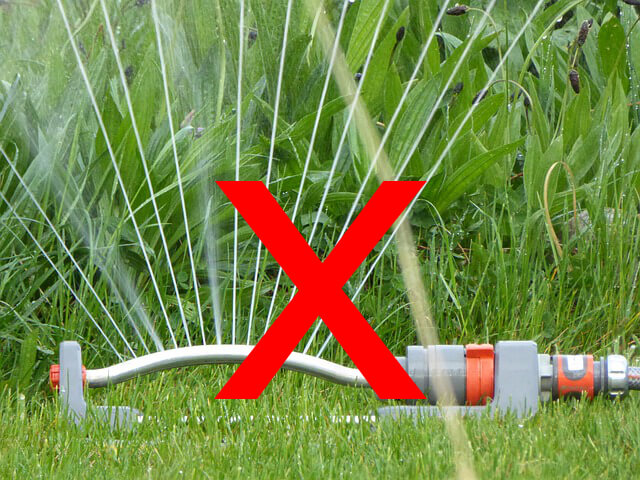
Avoid using a sprinkler for watering tomatoes.
But if the forecast is sunny, don’t get out the sprinkler. Overhead watering can encourage blight and other fungal disease.
What You Can Do:
- Use a watering wand, soaker hose, or drip irrigation to water tomatoes at ground level.
- Irrigate in the morning. If you do get water on the leaves, they’ll dry out during the heat of the day.
- Don’t work in your tomatoes when they’re wet. If blight is present, you can move it between plants, especially when they’re wet.
- Add a layer of mulch to slow down evaporation and keep soil more evenly moist.The mulch can also keep soil and soil-borne fungal spores from splashing up on your tomatoes when it rains.
4. Tomatoes set fruit best when nighttime temps are between 60-70 degrees Fahrenheit.
If you have a hot summer or heat wave (temperatures consistently greater than 90 degrees F in day and 75 degrees F at night), you probably won’t see baby tomatoes growing during those hottest weeks.
Under heat stress, your tomato’s pollen basically gets cooked. Fertilization rates go down, and blossoms may even drop off your plants. Don’t give up hope!
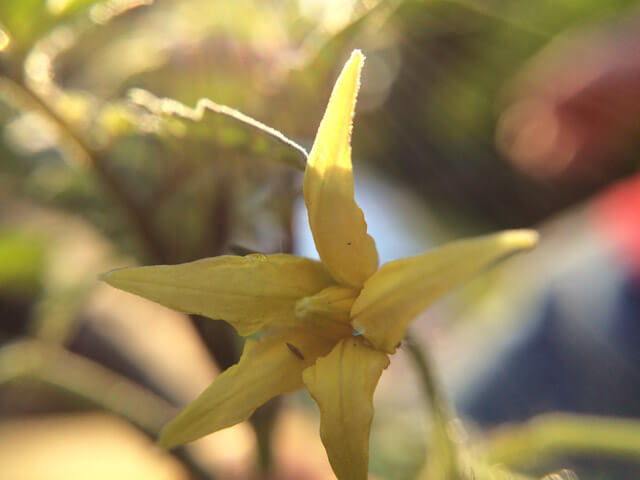
Will this tomato blossom make it through a heat wave?
What You Can Do: Keep that tomato watered and weeded. Hang up material to give it afternoon shade. Mulch, mulch, mulch. When the heat subsides, it will start fruiting again. Most indeterminate varieties will produce fruit through frost (and beyond if you cover them on frosty nights).
If heat is a recurring challenge, search for heat-tolerant tomato varieties that breeders have developed to do well even when the weather gets hot.
5. Parasitic wasps eat tomato hornworms from the inside out.
If you’ve grown tomatoes before, you may have met the giant green, hungry hornworms. A few can devour a plant in days. What’s a gardener to do? Hope* for parasitic wasps! These tiny wasps can be your tomato’s biggest heroes.
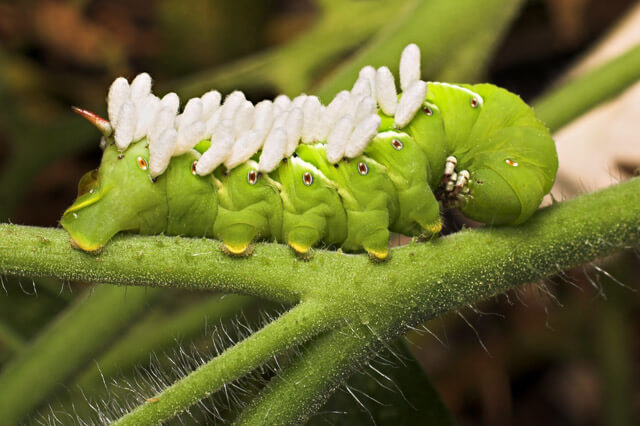
A doomed hornworm covered with cocoons of braconoid wasps. The adult wasps will hatch, fly off to mate, and find new hosts for their young.
Braconoid wasps lay eggs under the caterpillar’s skin. The larva hatch, feed on the caterpillar’s guts, and then emerge from its skin and pupate. (Watch an amazing, slightly disturbing video of the process.) Bye-bye, hornworms.
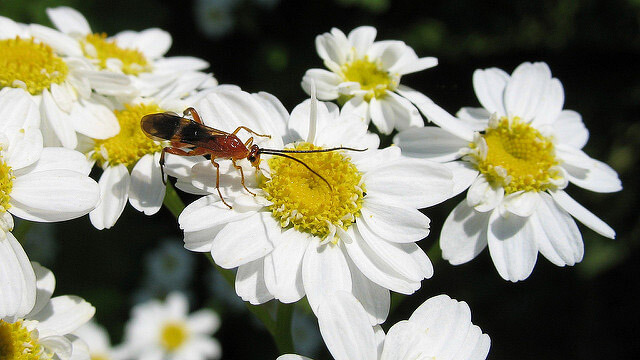
Braconoid wasps don’t sting humans, so we have no need to fear the nectar-feeding adults. Photo by Gilles Gonthier/Flickr.
What You Can Do: Adult braconoids drink nectar, so you can attract them with flowers in your garden. Leave a few carrots in the ground, and they’ll flower in their second year. You can grow other carrot-family flowers like dill, parsley, and Queen Anne’s lace or flowers from the sunflower family like daisies, fleabane, Calendula, and German chamomile.
*In Defense of the Hornworm
While it’s tempting to cheer on those caterpillar-eating wasps, you should know that the tomato-munching caterpillars are a fascinating animal to have in your garden.
They grow up to be sphinx moths (aka hawk moths). These large moths are such fun to watch as they hover near night-blooming flowers to drink through their long proboscis.
So, if you do find hornworms that that wasps didn’t find yet, try moving them off your prized plants and onto volunteer tomatoes in your compost pile or a nightshade weed, like datura or horse nettle, in the back alley.
The caterpillars fill up on unwanted plants, pupate, and hatch into magnificent moths that you can enjoy watching on summer evenings as you sit out eating a dinner that includes tomatoes you grew yourself.
Are you growing tomatoes in your garden? Do you have special ways to give your tomato plants the advantage?
Tell me how you care for your homegrown tomatoes in the comments below.

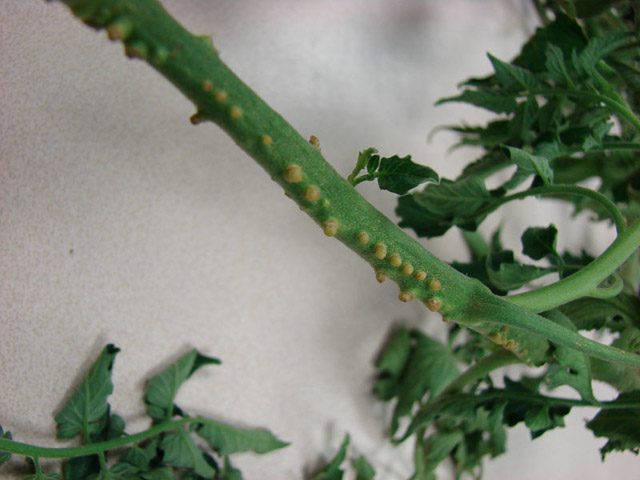
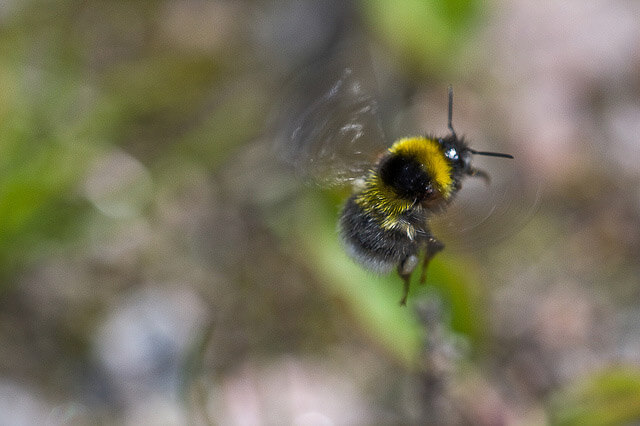
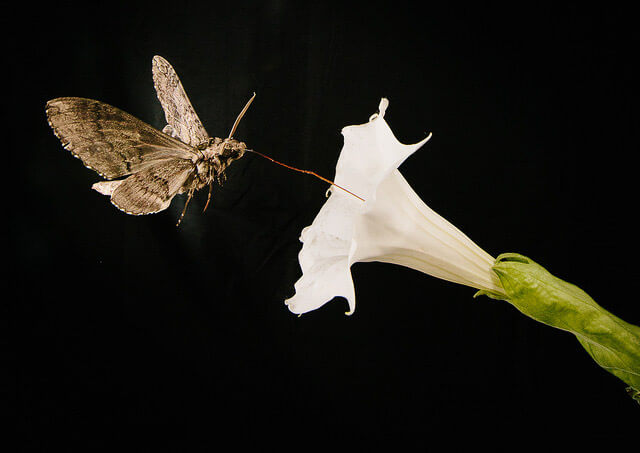
Helpful hint for deep watering
Collect plastic bottles – a 1/2 gallon milk jug is a good size
Drill a couple of holes in the bottom of each
Bury a jug near each tomato plant
Fill with water and cap.
Water drains deep into the soil- encourages root growth and makes it easier for the t-plants to survive hot/dry ABQ summer months. And should you have problems with mid-season end blight- the jug makes it easy to add supplemental calcium
see email for photos
Help. My new growth tomato leaves are severely curled up. Any idea how to treat? It even passed to my potatoes. Their leaves are curling too
My tomatoes leaves were already yellowing around the edges when we planted the starts in ground. Do they need a fertilizer nutrient or are they diseased, and can they grow out of it?
The connection to adult to adult sphynx moth was interesting to read
Annette – I’ve missed a couple comments, and I’m sorry to have missed yours! Just in case you see this curling again this season, here are a few thoughts. Depending on where you live and what type of curling you’re seeing, this could be a disease (like curly top) or a nutrient deficiency. Here’s a good, comprehensive video on different kinds of tomato leaf curl from the MI Gardener: https://youtu.be/9JTsQMB8H7M Hopefully, this will help you narrow it down to the cause!
Stephen – I’m sorry to have missed your comment before. For the coming season, here are a few ideas about yellow leaves. Often, yellow edges on starts is simply an indication that they have been over-fertilized and have some salt build-up. Once you plant them in the ground, the new leaves don’t have that problem. However, if you’re still seeing yellow edges on your tomato leaves, it could be a pathogen. This resource from Cornell may be useful for diagnosing it: http://vegetablemdonline.ppath.cornell.edu/DiagnosticKeys/TomLeaf/TomLeafKey.html
Crumbling a couple of eggshells into the hole before planting helps the tomatoes.
Crumbling a couple of eggshells in the hole before planting helps.
Thanks so much for all the great info!!! Thehalf gallon waterer is also a great idea. I’m so glad I signed up for your site!!! Thank you again!!!